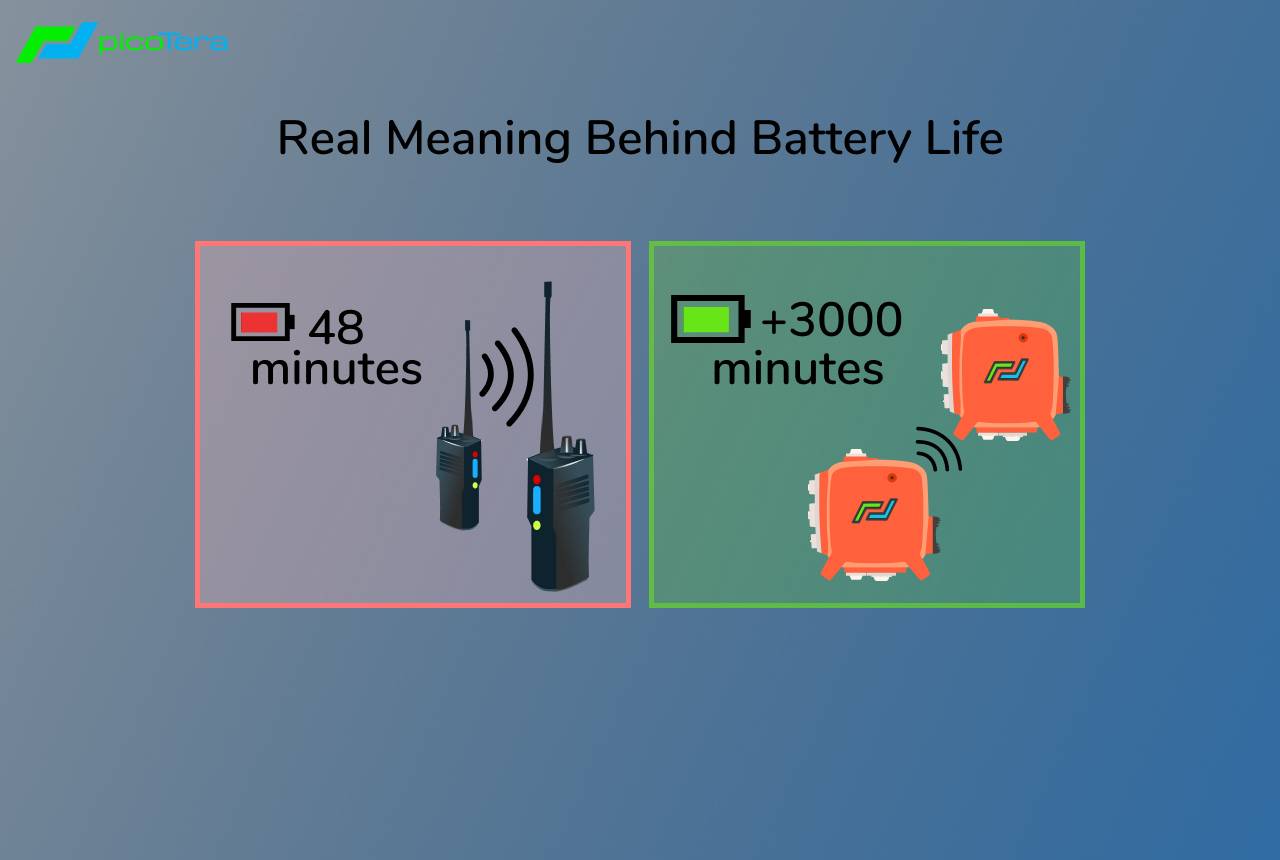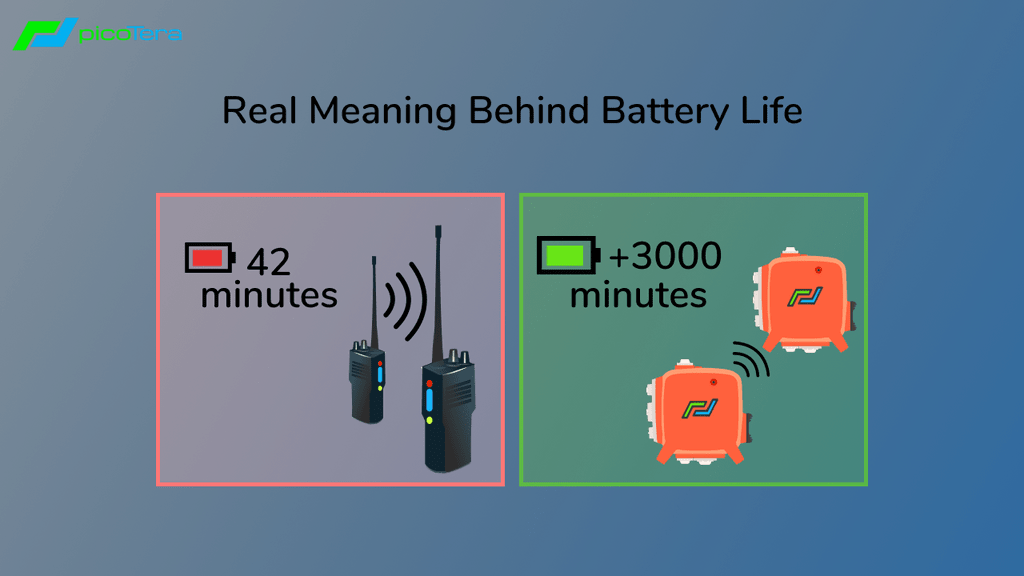True Meaning of Battery Life
On average you can find Radios offering 14-18 hours of battery life. But what does that really mean?
Posted on: Oct 14, 2021
True Meaning of Battery Life
There is no doubt that reliable communication requires a reliable battery performance. Essentially you want your communication device to stay on when you need it.
When you are shopping for conventional radios, you get exposed to some battery life specifications that seem applicable for your case. On average you can find Radios offering 16 hours of battery life. But what does that really mean?
It is common practice among 2-way radio manufacturers to report the battery life based on 5-5-90 use cases. That means during your work shift you only listen to Radio 5% of the time, talk to the Radio for 5% of the time and 90% of the time the Radio is idle. To put that in perspective, it suggests you can have 16 hours of battery life only if you talk for 5% of 16 hours (= 48 minutes) and listen to radio no more than 48 minutes. It is not easy to estimate the battery life for continuous talk or listening time (in the case of instructor for example) based on current radio specifications.
When purchasing a radio device, purchaser agents need to pay attention to the true meaning of battery life and make sure it meets the requirements of their sites.
picoTera reports 100% talk and listening time for battery life specifications. That means with a single charge, users can talk and listen to multiple channels for the duration of the specified battery-life reported for each product. Our current products offer 50 hours continuous listen and talk times which is 62 times more than currently available radios.
One can ask, how come such a large battery in radios offers such short battery life? The answer is in their technologies. Many of these radios are still using very outdated technologies that are relying on transmitting high power signals to radio receivers to operate. Conventional radios these days can reach up to 10 watts using high-power PAs (Power Amplifiers). These high-power PAs (Power Amplifiers) consume most of the battery energy into radiation and heat which users can feel by their radio getting warm.
At picoTera, we use a very low power transmitter that transmits a small fraction compared to that of a conventional radio to establish connection. Such advanced transmitters expose users to much less radiation and provide extended battery life and a reliable communication network.
Find the most updated product specifications on our product page: https://www.picotera.co/products/
Share
